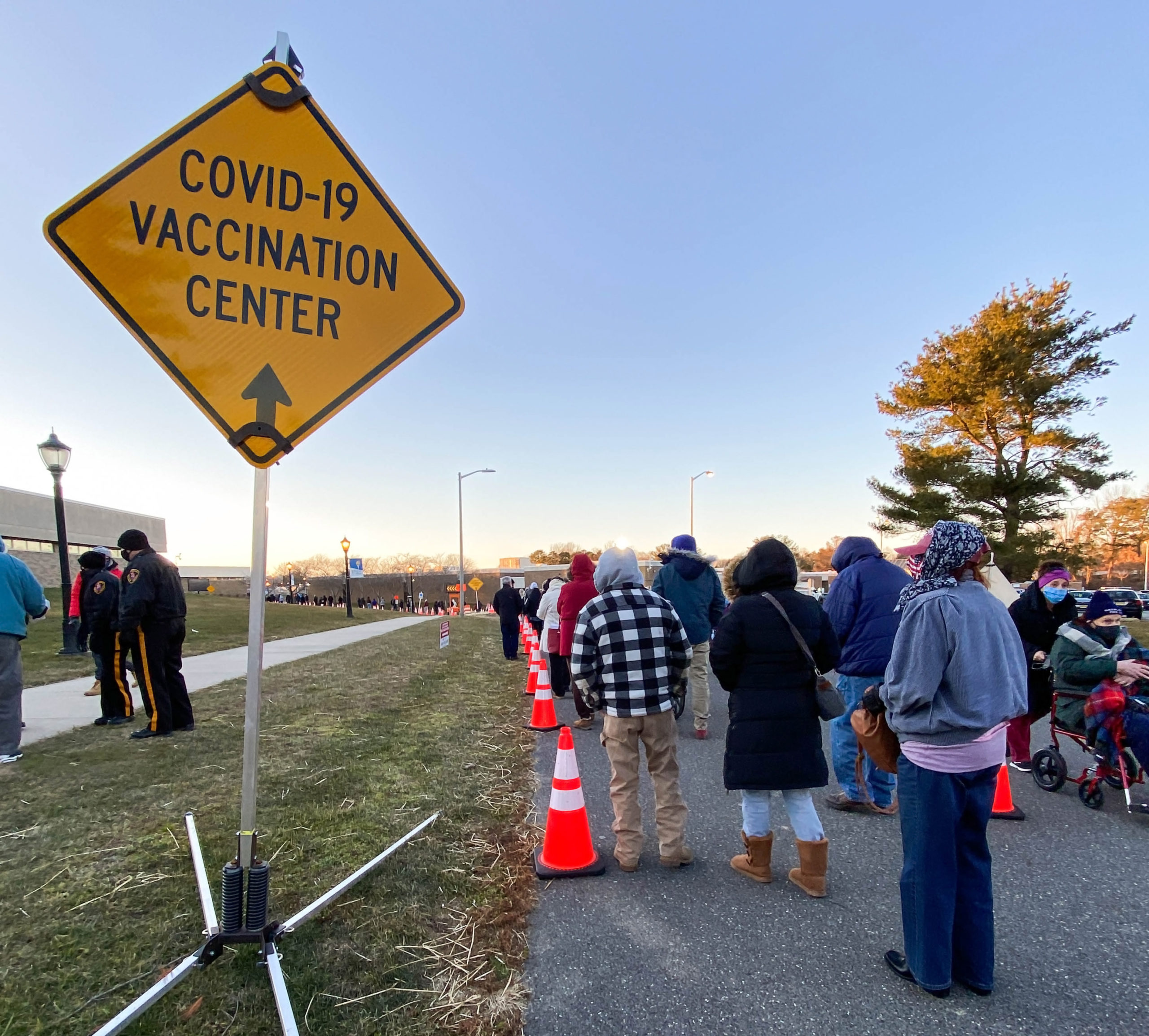Black residents in Alabama have the highest rates of COVID-19 cases and deaths in the state but the lowest vaccination rates. White residents are overrepresented among Alabamians receiving the COVID-19 vaccinations, while Black residents are underrepresented. In Alabama, state and local administration choices to overlook majority Black communities and inefficiencies in vaccine distribution are the driving forces behind the low levels of COVID-19 vaccinations within the Black community.
Between December 14, 2020, and March 26, 2021, Alabama had only administered 64% of the COVID-19 vaccines delivered to the state. This distribution rate is much lower than the U.S. average of administering 81% of all COVID-19 vaccines provided. The inefficiencies in vaccine administration in Alabama mean that all state residents are underserved in their access to the COVID-19 vaccines. Figure 1 below documents the low rates of Alabama residents vaccinated compared to the U.S. average. As the nation is increasing its administration of COVID-19 vaccines, Alabama is falling further behind. Over the past two weeks, the gap between the percentage of Alabama residents vaccinated, and the U.S. average increased from a 4% difference on March 18, 2021, to a 5% difference on March 31, 2021. This lack of access is even more severe for African American residents in the state.
Figure 2 below reveals that Black residents in Alabama represent a more substantial share of the COVID-19 cases and deaths in the state than their population percentage. The bars above the 0 axis represent the percentage of over-representation in each of the COVID-19 outcomes. The bars below 0 axis represent the percentage of under-representation in the COVID-19 consequences. If the rate of COVID-19 cases, deaths, and vaccines were equal to the group’s portion of the population, then the data for that group in Figure 2 would be listed along the 0 axis, indicating no gap between vulnerability and access to the vaccine. The striking pattern shown is that Black people are over-represented in the risks associated with COVID-19 but under-represented in receiving the vaccine. Although Black people represent 27% of Alabama’s population, they compose 29% of all COVID-19 cases and 31% of all COVID-19 deaths. White residents in Alabama are a much lower percentage of the COVID-19 cases (-11%) and deaths (-3%) than their share of the population, yet still, have much greater access to the COVID-19 vaccinations (8%).
The significant racial differences in vaccine uptake in Alabama are much more likely the result of state and local administrators’ choices than potential recipients’ preferences. Alabama Regional Medical Services (ARMS), a health clinic that primarily serves a lower-income Black community in Birmingham, AL, reported geographic discrepancies in the government’s distribution of COVID-19 vaccines. Data from ARMS reveals that the geographic differences in vaccine access have important racial implications. The January doses of the vaccines went to an affluent White suburb of Birmingham. ARMS did not receive its first doses of COVID-19 vaccines from the State of Alabama until March 8, 2021, and is scheduled for a new shipment every three weeks. No information has been provided about whether future shipments to ARMS will be increased to compensate for the limited access in the early vaccine distribution phase. Black residents’ lack of access to vaccinations was also observed in Mobile County, where 14 of the 18 state vaccination sites were located in neighborhoods with a larger White population.
Assumptions about vaccine hesitancy have been used to justify racial disparities in vaccine uptake and mask the role of administrative decisions in creating these unequal outcomes. Sheila Tyson, a Commissioner for Jefferson County, AL (the county containing Birmingham), reported that state officials did not plan to distribute COVID-19 vaccines to Black communities because they anticipated Black residents would reject them due to “vaccine hesitancy.” She said:
Commissioner Tyson’s comments reveal the dangers of assuming that Black people do not want the COVID-19 vaccines and how this assumption can generate racial disparities. Figure 3 below displays national polling data on the vaccination confidence level for the COVID-19 vaccines among Black, Latinx, and Asian populations. Most Black people surveyed were confident that the COVID-19 vaccines are safe (69%) and effective (71%). This national polling data suggests that administrative decisions to distribute vaccines in White communities, like those in Birmingham and Mobile, play an integral role in creating the racial gap in COVID-19 vaccinations. In Alabama, Black residents living in majority Black communities have had less access to the COVID-19 vaccines. Alabama administrators cannot justify racial disparities in COVID-19 vaccinations with unsubstantiated assumptions about vaccine hesitancy within the Black community.
State and local governments in Alabama have done little to address the racial disparities associated with COVID-19. Rather than mitigating the racial disparities of COVID-19 cases and outcomes, the administrative choices in vaccine allocation have exacerbated them. Now, as the state moves to lift public health restrictions, Black Alabama residents are even more vulnerable to the harms of COVID-19.








